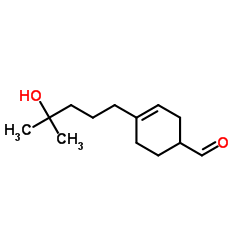An odor-specific threshold deficit implicates abnormal cAMP signaling in youths at clinical risk for psychosis.
Vidyulata Kamath, Paul J Moberg, Monica E Calkins, Karin Borgmann-Winter, Catherine G Conroy, Raquel E Gur, Christian G Kohler, Bruce I Turetsky
Index: Schizophr. Res. 138(2-3) , 280-4, (2012)
Full Text: HTML
Abstract
While olfactory deficits have been reported in schizophrenia and youths at-risk for psychosis, few studies have linked these deficits to current pathophysiological models of the illness. There is evidence that disrupted cyclic adenosine 3',5'-monophosphate (cAMP) signaling may contribute to schizophrenia pathology. As cAMP mediates olfactory signal transduction, the degree to which this disruption could manifest in olfactory impairment was ascertained. Odor-detection thresholds to two odorants that differ in the degree to which they activate intracellular cAMP were assessed in clinical risk and low-risk participants.Birhinal assessments of odor-detection threshold sensitivity to lyral and citralva were acquired in youths experiencing prodromal symptoms (n=17) and controls at low risk for developing psychosis (n=15). Citralva and lyral are odorants that differ in cAMP activation; citralva is a strong cAMP activator and lyral is a weak cAMP activator.The overall group-by-odor interaction was statistically significant. At-risk youths showed significantly reduced odor detection thresholds for lyral, but showed intact detection thresholds for citralva. This odor-specific threshold deficit was uncorrelated with deficits in odor identification or discrimination, which were also present. ROC curve analysis revealed that olfactory performance correctly classified at-risk and low-risk youths with greater than 97% accuracy.This study extends prior findings of an odor-specific hyposmia implicating cAMP-mediated signal transduction in schizophrenia and unaffected first-degree relatives to include youths at clinical risk for developing the disorder. These results suggest that dysregulation of cAMP signaling may be present during the psychosis prodrome.Copyright © 2012 Elsevier B.V. All rights reserved.
Related Compounds
| Structure | Name/CAS No. | Molecular Formula | Articles |
|---|---|---|---|
 |
4-(4-Hydroxy-4-methylpentyl)cyclohex-3-enecarbaldehyde
CAS:31906-04-4 |
C13H22O2 |
|
Enhanced sensitization and elicitation responses caused by m...
2011-12-01 [Contact Dermatitis 65(6) , 336-42, (2011)] |
|
Can exposure limitations for well-known contact allergens be...
2011-06-01 [Contact Dermatitis 64(6) , 337-42, (2011)] |
|
Experimental elicitation with hydroxyisohexyl-3-cyclohexene ...
2007-03-01 [Contact Dermatitis 56(3) , 146-50, (2007)] |
|
[Current contact allergens].
2011-10-01 [Hautarzt 62(10) , 751-6, (2011)] |
|
Two fragrance chemicals may act as toxicants via TRPA1 stimu...
2013-09-01 [Toxicol. In Vitro 27(6) , 2022, (2013)] |